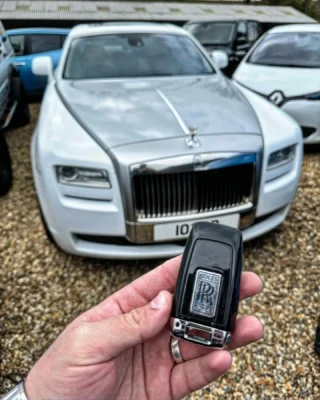Comprehensive Guide to Car Door Lock Repair: Troubleshooting and Solutions
The stability and performance of a vehicle's door locks are necessary for both the security of the car and the safety of its occupants. Car door locks can experience a range of concerns, ranging from minor mechanical problems to complete failures. This post looks for to provide a useful introduction of car door lock repair, laying out typical issues, diagnostic treatments, and solutions.
Understanding Car Door Locks
Before diving into repair procedures, it is important to comprehend the parts of a common car door lock. There are two main kinds of locks: mechanical and electronic.
Parts of a Car Door Lock System
- Lock Cylinder: The part where the key is placed.
- Latches: Mechanisms that hold the door shut.
- Actuator: Electric motor in electronic locks that assists in locking and unlocking.
- Linkage: Connects the lock cylinder to the lock.
- Remote Key Fob: In electronic systems, this is used to lock and unlock the doors from a distance.
Common Issues with Car Door Locks
Car door locks can fail for a wide range of reasons. Here are some common problems experienced by vehicle owners:
- Sticking or Frozen Locks: Especially in winter, locks can end up being hard to operate.
- Lock Not Engaging or Disengaging: Both mechanical and electronic locks can face issues where they do not react to the key or remote.
- Key Jams: The key may get stuck in the lock, making it impossible to lock or unlock the door.
- Remote Malfunction: In electronic systems, the key fob might not work due to battery issues or programming issues.
- Physical Damage: Vandalism or accidents can damage the lock system.
Troubleshooting Car Door Lock Issues
When a car door lock is not functioning correctly, it is necessary to diagnose the problem precisely before continuing with a repair. Below are actions that can help fix the problem:
Step-by-Step Troubleshooting
Visual Inspection:
- Check the door lock and surrounding components for noticeable damage.
- Take a look at the key for wear and tear.
Test the Key:
- If the lock is sticking or not engaging, try using an extra key if offered.
- Make sure the key is tidy from dirt and debris.
Check the Actuator:
- Listen for any sounds when pressing the key fob. A clicking sound might suggest a malfunctioning actuator.
Inspect Door Wiring:
- Check the electrical wiring that connects the door lock to the vehicle's electrical system.
- Try to find disconnected or frayed wires.
Temperature Influence:
- If the lock is sticking in winter, apply lithium grease to help lube the mechanism.
Fixing Common Door Lock Issues
Once the issue has been identified, the repair can start. Here are some typical repair techniques for different problems:
Fixing a Sticking or Frozen Lock
- Cleaning up: Use a graphite lube or silicone spray to clean and lube the mechanism.
- Heating: If frozen, utilize a hairdryer to warm the location around the locking mechanism thoroughly, preventing overheating.
Repairing a Lock Not Engaging/Disengaging
Lock Cylinder Replacement:
- If the lock cylinder is worn, consider changing it. This frequently involves prying off the door panel to access the lock mechanism.
Actuator Replacement:
- For electronic locks, if the actuator is faulty, it will require replacement. Ensure to detach the battery before trying this repair.
Repairing a Jammed Key
- Extraction Tool: If a key is stuck, utilize a set of needle-nose pliers to carefully pull it out, or a key extractor.
- Lock Lubrication: Apply a percentage of lube to alleviate the procedure.
Remote Key Fob Malfunction
- Battery Replacement: Most remotes have replaceable batteries. Follow the maker's directions to replace the battery.
- Reprogramming: Sometimes, the remote requirements to be reprogrammed. Describe the vehicle's handbook for steps to reprogram the key fob.
Physical Damage Repairs
- Door Lock Assembly Replacement: If the lock is physically harmed, total replacement of the lock assembly might be essential.
- Professional Help: If unsure about DIY repairs, seek help from a qualified mechanic.
Maintenance Tips for Car Door Locks
To lengthen the life of car door locks, regular upkeep is important. The following practices can help keep ideal performance:
- Regular Lubrication: Apply suitable lube to the locks every couple of months.
- Keep Keys Clean: Regularly clean the car keys to prevent dirt buildup.
- Prevent Excessive Force: Do not use extreme force when locking or unlocking; this can trigger damage gradually.
- Look for Signs of Wear: Be mindful to any modifications in the lock's efficiency and address issues without delay.
FAQs about Car Door Lock Repair
Q: How can I inform if my door lock is broken?A: Common
signs include the lock not engaging or disengaging, a jammed key, sounds from the door when utilizing the key fob, or visible damage to the lock assembly.
Q: Can I repair a car door lock myself?A: Yes, lots of basic problems can be dealt with by following the repairing steps in this post, but complex problems may require expert aid. Q: What kind of lubricant must I utilize
for my locks?A: It is best to utilize graphite powder or silicone-based lubes because oil can bring in dirt and gunk. car key repairs : How much does it typically cost to change a car door lock?A: The cost can differ extensively
based upon the vehicle's make and design, however common replacement costs
can range from ₤ 100 to ₤ 300, consisting of labor. Car door lock repair can seem complicated, however understanding the elements and typical concerns can make the procedure far more manageable. Whether tackling little repairs yourself or looking for professional support for more substantial concerns, keeping the door locks operating appropriately is important for vehicle security and safety. Routine upkeep and timely attention to issues can substantially extend the life of your car's locking system.

